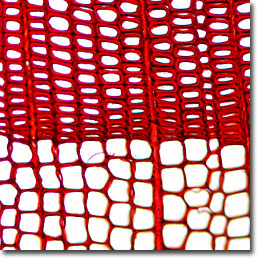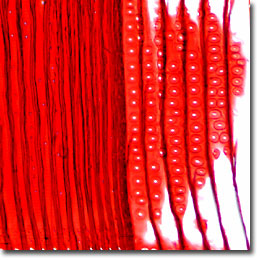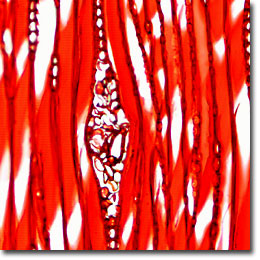The Sugar Pine
The Sugar Pine (Pinus lambertiana) is a softwood tree found primarily in the Cascades and Klamath mountains of Oregon and the Sierras and Yosemite mountains of California. The sapwood ranges from nearly white to pale yellow brown in color, and is frequently discolored by blue stain. Also discolored with a brown stain is the heartwood, which varies in hue from light brown to pale red.

Cross Section

Radial Section

Tangential Section
The sugar pine is an immense forest tree, growing to an average of 200 feet and having large, cylindrical 10 to 20-inch long cones that are up to 4 inches thick. Dark bluish green leaf needles occur 5 to a cluster and range from 3 to 4 inches long. Often planted as a shade or screen tree, the sugar pine grows well in northwestern states, but is seldom seen east of the Rocky Mountains.
Today, the biggest sugar pine measures 270 feet high with a trunk circumference of 348 inches and a branch spread of 68 feet on all sides. This huge specimen was recorded by the National Register of Big Trees in 1992 and can be visited at the Yosemite National Park, in California. Sugar pine wood is used to make boxes and crates, and is sometimes used for millwork (door, sash, interior and exterior trim, and siding panels). Lower grades of this wood are used for building construction (sheathing, subflooring, and roofing).
Microscopic examination of iron-alum hematoxylin and safranin stained thin sections (see the digital images presented above) reveals a gradual transition from spring to summer wood. Tracheids average between 40 and 50 micrometers in diameter and bordered pits occur in one to two rows along the radial walls. Longitudinal parenchyma is lacking, and the rays are of two types, uniseriate and fusiform. Resin canals have thin-walled epithelium in the sapwood, but thick-walled in the heartwood and frequently occluded with tylosoids.